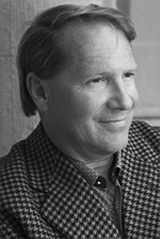
Thomas A.J. McGinn
2933 Polo Club Road
Nashville, TN 37221-4346
(615) 371-5245 (tel.)
(615) 371-1301 (fax)
thomas.a.mcginn@vanderbilt.edu
tommcginn@comcast.net
Harvard College B.A. magna cum laude 1978
Cambridge University M.A. 1980
University of Michigan Ph.D. 1986
Title of Dissertation: Prostitution and Julio-Claudian Legislation: The Formation of
Social Policy in Early Imperial Rome
Special Areas of Interest: Roman Law and Social History
Recent Publications:
Books:
1. Prostitution, Sexuality, and the Law in Ancient Rome (Oxford University Press: 1998)
Paperback edition published by Oxford University Press in January 2003
2. A Casebook on Roman Family Law (coauthor with Bruce Frier: Oxford University Press: October 2003)
3. The Economy of Prostitution in the Roman World: A Study of Social History and the Brothel (University of Michigan Press: February 2004)
Recent articles and/or chapters:
Historia: Zeitschrift für alte Geschichte 53.2 ( 2004) 200-208: Missing Females?: Augustus’ Encouragement of Marriage Between Freeborn Males and Freedwomen
in J.-J. Aubert and A.J.B. Sirks eds., Speculum Iuris: Roman Law as a Reflection of
Economic and Social Life (University of Michigan Press 2002) 46-93: The Augustan
Marriage Legislation and Social Practice: Elite Endogamy vs. Male “Marrying Down”
Proceedings of the Cambridge Philological Society 47 (2001) 81-102: Satire and the Law:
The Case of Horace
Abstract from work review:
"As an example selected very nearly at random, consider Case 8, "The ability to procreate" (29-30). Citing Justinian's Digest (D. 23.3.39.1, Ulpian in the thirty-third book on the Edict), the case examines whether a woman can validly marry a eunuch (spado, more generally a sterile or impotent male, as the authors point out on p. 363) and whether the latter may therefore receive a dowry. Ulpian distinguishes those whose infertility has been caused by castration, on one hand, from those whose condition results from unspecified (presumably natural) causes, on the other. The former cannot marry, concludes the jurist without further elaboration, but the latter can.
Ulpian's reasoning in this instance is elusive, to say the least. F/M describe the distinction as "odd," but point out that it is operative in other instances as well. Apparently there is some stigma attaching to castration, and not to infertility in general, that raises a bar to marriage. F/M ask: is Ulpian's objection founded upon morality? "Does Ulpian presume that the eunuch's castration was deliberate, not accidental? And if deliberate, who bears the blame?"
My own experiences in discussing this and comparable material with undergraduates suggest that the topic of deliberate castration in antiquity offers fodder for wide-ranging, if not always well-focused, discussions about cultural difference. F/M direct their reader instead to a topic of great cross-cultural interest and considerable contemporary political, legal, and social topicality: "in the Roman world, as in many other past and present societies, a strong tradition linked marriage to the procreation of children[...]. Nonetheless, as this Case shows, inability to beget children was not in itself necessarily a bar to marriage." To what extent does this concession undermine constructions of "traditional" marriages and families? Granting that the sources cannot definitively answer the question one way or other, F/M invite their reader to consider how a proposal to recognize same-sex marriage might fare in the hands of the Roman jurists: "are Roman policies linking marriage and procreation enough to make same-sex marriage impossible?"
While the approach of the cases as a whole in the volume is less hypothetical and speculative than this single instance might suggest, this case does illustrate the extent to which volume as a whole is conceived as an introduction to, and an exercise in, legal reasoning in general as well as Roman family law in particular. The authors suggest that to encounter this law is to encounter social and historical difference in a manner that challenges "the tacit presumptions of modern family life" and problematizes the claim of any particular family formation to be "authentically 'traditional,'" and they note the extent to which family relationships and the claims of nontraditional families have become subject to legal scrutiny in recent decades (3). At the same time, the reader is warned that the juristic sources "must always be appreciated as a set of primarily legal institutions, not as an anthropological description of actual Roman family life" (11) and that they concern themselves largely with the needs and interests of a landed elite (6)." - Bryn Mawr Classical Review 2005.04.32














